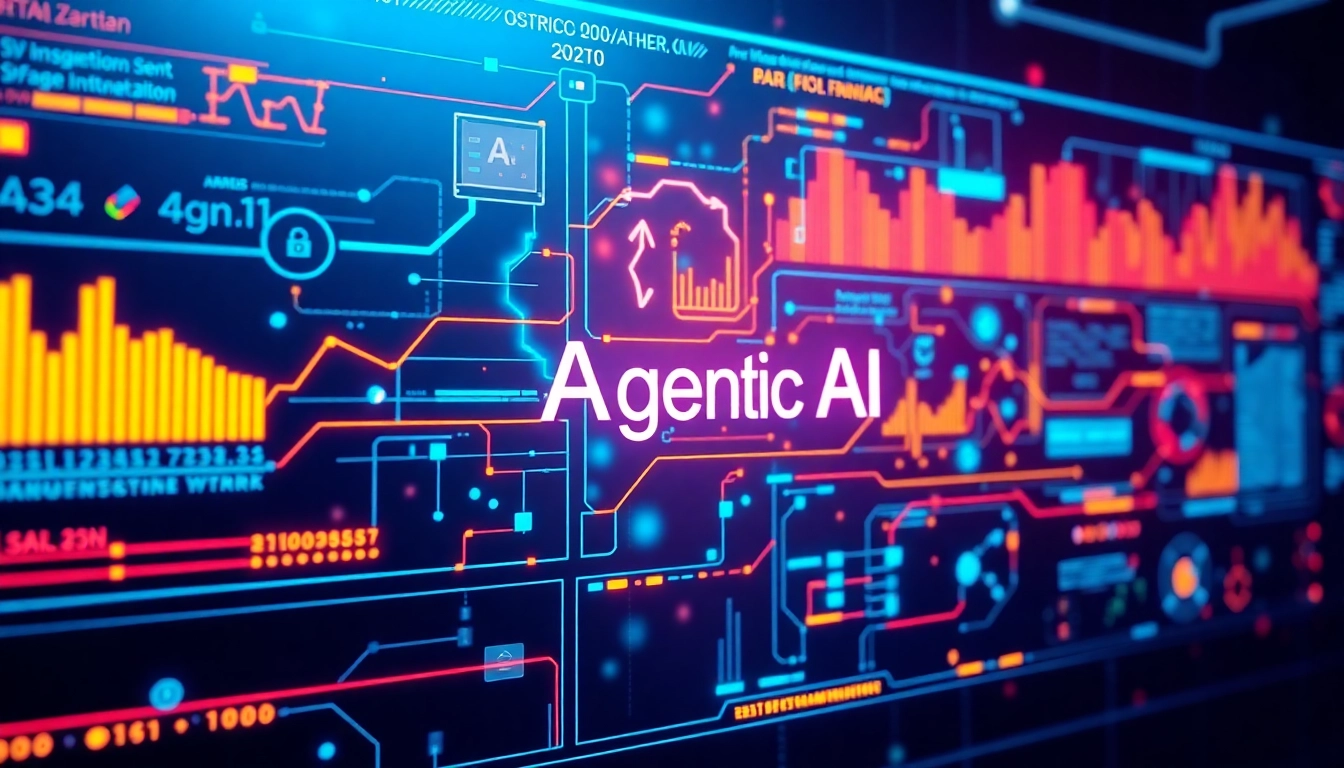Introduction to AI Chat Bots
In the ever-evolving landscape of digital technology, ai chat bot solutions have emerged as indispensable tools for various industries. AI chat bots utilize advanced algorithms and machine learning principles to engage with users in real-time, providing instant responses and enhancing customer experiences. The integration of these intelligent systems into businesses is not merely a trend; it represents a significant shift in how organizations communicate, operate, and cater to their clientele.
Understanding AI Technology
At its core, artificial intelligence (AI) refers to the simulation of human intelligence processes by computer systems. These processes encompass learning (the acquisition of information and rules for using it), reasoning (using rules to reach approximate or definite conclusions), and self-correction. AI encompasses various subfields, including machine learning, where systems learn from data rather than through explicit programming, and natural language processing (NLP), which enables computers to understand and respond to human language.
The Role of AI Chat Bots in Modern Business
AI chat bots play a pivotal role in modern businesses by automating communication and streamlining processes. Unlike traditional customer service models, which often rely on human interaction, chat bots are available 24/7, significantly reducing response times and operational costs. They leverage vast amounts of data to provide instant support, freeing up human agents to focus on more complex inquiries. This shift not only enhances operational efficiency but also improves customer satisfaction by ensuring that assistance is always available.
Benefits of Integrating AI Chat Bots
The advantages of incorporating AI chat bots into business operations are multifaceted. Some key benefits include:
- Cost Efficiency: By automating routine tasks, businesses can minimize labor costs while maintaining high service levels.
- Better User Experiences: AI chat bots provide swift and personalized responses, leading to improved customer engagement and satisfaction.
- Data Collection and Insights: Chat bots can gather and analyze user interactions, helping businesses understand customer preferences and improve products and services.
- Scalability: AI chat bots can handle multiple inquiries at once, allowing businesses to scale their customer support efforts without significant increases in workload.
Key Features of Effective AI Chat Bots
Natural Language Processing Capabilities
Natural Language Processing (NLP) is a critical feature of effective AI chat bots. NLP allows chat bots to understand and interpret human language in a way that is both meaningful and contextually relevant. This capability is vital for maintaining fluid conversations with users. Advanced NLP enables chat bots to decipher nuances, such as intent behind queries, and respond appropriately, thus reducing frustration and enhancing user satisfaction.
Personalization and User Data Utilization
Effective AI chat bots personalize interactions based on user data. They can analyze past interactions, behavioral patterns, and preferences to tailor responses to individual users. This level of personalization creates a more engaging interaction, as users feel that their specific needs are being addressed. Additionally, personalized recommendations can drive sales and enhance customer loyalty, as users are more likely to engage with content and products they find relevant.
Multi-Language Support for Global Reach
As businesses expand globally, the need for multi-language support in AI chat bots becomes ever more crucial. Effective chat bots can communicate in multiple languages, allowing businesses to cater to diverse customer bases. This feature not only breaks down language barriers but also enhances the user experience by making communication more accessible and relatable, thus broadening the reach of the business into international markets.
Common Applications of AI Chat Bots
Enhancing Customer Support Services
One of the most prevalent applications of AI chat bots is in customer support. Chat bots can manage a variety of customer inquiries, from providing product information to troubleshooting issues. By automating responses to common questions, businesses can significantly reduce wait times for customers, improving overall satisfaction. Furthermore, with capabilities for escalation, AI chat bots can seamlessly transfer complex queries to human agents when necessary, ensuring a balanced approach to customer support.
Streamlining Sales Processes
AI chat bots also play a crucial role in streamlining the sales process. They can guide potential customers through product selections, answer queries related to pricing, and assist with checkout processes, all while utilizing data-driven insights to recommend products that meet user needs. This not only enhances the shopping experience but also drives conversions, as immediate assistance has been shown to reduce cart abandonment rates significantly.
Facilitating User Engagement in E-commerce
In the realm of e-commerce, AI chat bots facilitate user engagement by initiating conversations and offering personalized shopping experiences. They can send proactive messages to users based on browsing behavior, recommend products, and even provide discounts during checkout. This proactive approach keeps customers engaged and increases the likelihood of repeated transactions.
Best Practices for Implementing AI Chat Bots
Defining Clear Objectives and Use Cases
Before implementing an AI chat bot, businesses must define clear objectives and use cases. Whether the goal is to enhance customer support, streamline sales, or gather user insights, understanding the purpose of the chat bot will guide its design and functionality. Establishing specific KPIs allows businesses to measure success effectively and make data-driven improvements over time.
Training the Chat Bot Effectively
The effectiveness of an AI chat bot relies heavily on its training. Organizations should invest time in curating datasets that reflect real customer interactions to train chat bots efficiently. Additionally, ongoing training based on user interactions can improve accuracy and performance. This iterative process ensures that the chat bot evolves with changing consumer expectations and industry standards.
Monitoring Performance and User Feedback
To maximize the efficacy of AI chat bots, continuous monitoring of performance metrics and user feedback is essential. Businesses should track response times, user satisfaction ratings, and the frequency of escalated queries to human agents. Implementing regular updates based on this feedback can lead to significant enhancements in functionality and overall user satisfaction.
Future Trends in AI Chat Bot Development
Emerging Technologies Shaping AI Chat Bots
The future of AI chat bots will be heavily influenced by advancements in various technologies. Innovations such as augmented reality (AR) and virtual reality (VR) can be integrated with chat bot functionality, providing immersive customer experiences. Additionally, the rise of voice-recognition technology is poised to transform how users interact with chat bots, as voice commands become more prevalent in consumer preferences.
The Impact of Machine Learning on User Interaction
Machine learning (ML) is set to revolutionize user interaction with AI chat bots. As chat bots learn from previous interactions, they become better at predicting user needs and providing relevant solutions. This capability enhances user engagement, as personalized and accurate interactions are prioritized. ML algorithms will increasingly adapt to user behaviors and preferences, creating a more intuitive conversational experience.
Predictions for AI Chat Bot Capabilities
Looking ahead, the capabilities of AI chat bots will continue to expand. Future chat bots may possess near-human-like conversational skills, allowing them to engage in deeper, contextually rich conversations. Enhanced emotional intelligence—where chat bots can recognize and respond to user emotions—might also emerge. These developments promise not only to enhance customer satisfaction but also to foster deeper emotional connections between brands and their customers.



